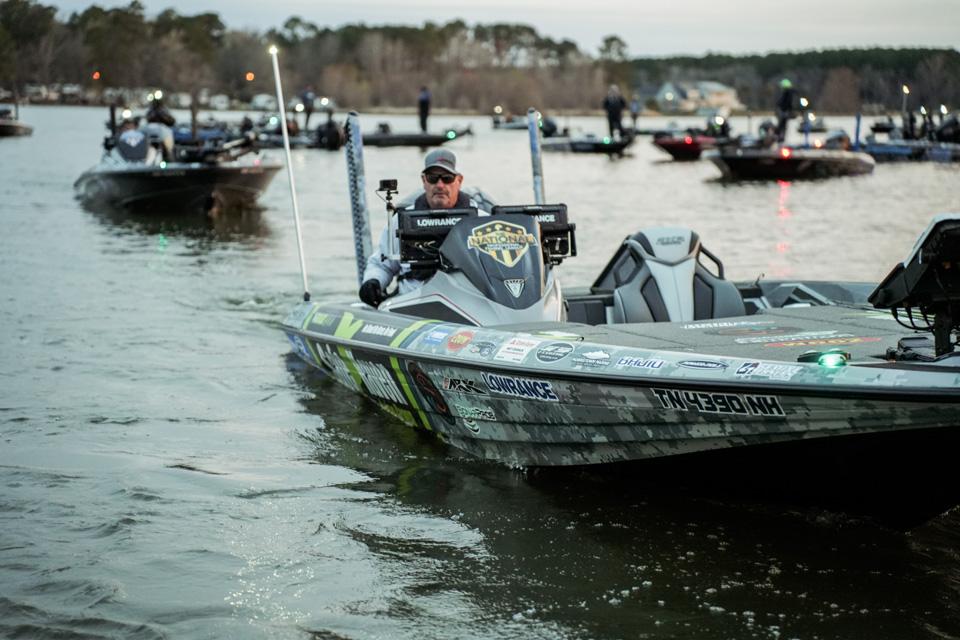Story by Todd Goade | Photos by Tanner & Travis Lyons
Take the title of this column and burn it into your brain during the springtime. It’s a bass fishing guarantee and one I know well, though sometimes I still forget it.
Landing on the first major wave of spawn-motivated bass as they flood the bank is the holy grail of bass fishing. If you’ve ever seen herds of big bass moving up shallow by the hour—especially on places like the Santee Cooper lakes, Lake Okeechobee or Lake Fork—you know what I mean. Many times, these big migrations can happen overnight. One day, a bedding flat might be the dead sea. The next day, it might be covered in bass eating everything that moves. If you’re fortunate to be the first one to take advantage of it, it’s like fishing for fish that have never seen a lure … ever. These are the kinds of days that create the “spawning illusion.”
The spawning illusion is real. Once you experience it, you want to recreate that magic every time you put the boat in the water. I’ve been guilty of it when I just knew the fish were going to hit the banks at any time, and I’ve been guilty of practicing for that just a little too much.
The illusion is thinking that every fish in the lake is going to move up at the same time. It just doesn’t work that way. The spawn is a two- to three-month process in most lakes. When we were at Santee Cooper two years ago in mid-May, I was still catching spawning fish, and when we were just there a few weeks ago some were already spawning. Also, it usually happens in waves at different times in different portions of the lake, especially in big lakes. That window of when they move up and eat everything in sight before going on beds is usually a small window in a specific area. It lasts for maybe just one day. Once they actually spawn and “lock down,” it takes time to catch them. So, catching this moment perfectly is very elusive. It’s a fast-moving target. The thing to keep in mind is they don’t all spawn at once and at any given time during the spawn, there are other patterns going on that can be more stable.
Pre-spawn and post-spawn patterns that surround the spawn are more stable and consistent over time than trying to catch that sudden move to the bank in a single pocket or cove. Also, these patterns can usually be repeated over large sections of the lake, providing more areas to execute on.
Typically, the shallower, upper ends of lakes warm up fastest, and the deeper, clearer lower ends are slower to warm. With that, the spawn in the upper end of a lake can be as much as a month ahead of the lower end. If they are spawning at the dam, chances are there are some great post-spawn pattern options up the lake. And, if fish are bedding up the lake, chances are there are fish down the lake that are still a few weeks away from spawning and those prespawn patterns should work.
We all want to land on that magical time of fish moving to the bank. Sometimes conditions seem so perfect for it to happen, but it doesn’t. Nature just doesn’t follow a rulebook on when every fish should report to the bank to spawn. Sometimes working more stable patterns around the spawn is a better play than trying to catch lightning in a bottle. I know when we go to Lake Norman (April 16-18) I’ll be looking for those more stable patterns and hopefully find some bedding fish as well.
And I’ll be doing my best not to get caught up in the “spawning illusion.”
Tight Lines!
Todd Goade – Angler Profile





